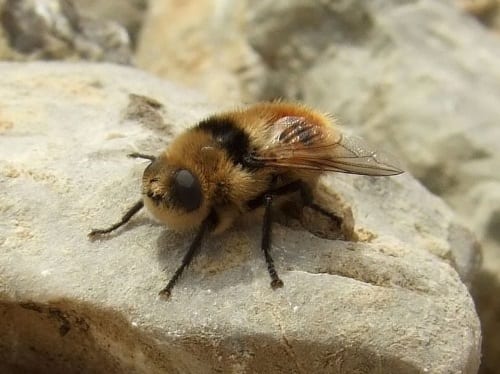Specimen of the Week 371: Reindeer skull
By Christopher J Wearden, on 14 December 2018
Good morning to our readers, on behalf of everyone here at the Grant Museum I would like to wish you all a very Merry Christmas. Today we are looking at an animal which is better known for delivering presents to children around the world than the fascinating aspects of its anatomy. This animal first became associated with a certain bearded-man-with-a-red-hat in 1823, when Clement Clarke Moore wrote the poem ‘A visit from St. Nicholas’(1). Since then the reputation has kind of stuck. Hopefully today’s blog will demonstrate that there is much more to love about these animals than just the work they do on Christmas Eve. Without further ado let us introduce our festive friend all the way from the North Pole, it’s our very own…
****Reindeer skull***
Reindeer (Rangifer tarandus) are a species of deer which are found in the arctic, sub-arctic and adjacent boreal forests of Greenland, Scandinavia, Russia, Alaska and Canada. There are 15 different subspecies of reindeer with each different type displaying anatomical differences suited to their environment. European reindeer have been domesticated and are used for meat, hides, antlers, milk and transportation. The use of reindeer to pull Santa’s was inspired by their history as draft animals (domesticated animals trained to draw heavy loads)(2). Males can stand more than 1.2 metres tall at the shoulder and exceed 250kg in weight; females are slightly smaller but unlike many other deer both males and females have antlers.
Rudolf the pink nosed reindeer
One thing we all know about reindeer is that they have red noses. Of course they do, it’s in a song! I have no reason to believe that a beloved Christmas jingle could be factually incorrect and after some investigation I’m delighted to say it’s true, some reindeer do have red noses. The catchily named 2012 study ‘Why Rudolph’s nose is red: observational study’ explained that some reindeer have a pink/red colouration on their nose due to a dense of array of blood vessels, which are packed in to supply blood and regulate body temperature in extreme conditions (3). Have a look here and see for yourself.
Antler management
A Specimen of the Week blog from 2011 describes how the nearly 3 metre-wide antlers belonging to our giant deer elicit surprise and wonder from visitors to the museum. As the blog rightly says visitors are often stopped in their tracks when they see the giant deer, but their amazement level goes from ‘wow!’ to ‘you’re joking!’ when we give them this juicy little factoid; this animal would shed and regrow its antlers every year. That’s right, all deer – including reindeer – shed and regrow their antlers. Typically this occurs on an annual basis although this depends on the deer’s species, age, physical health and other factors (4). Given the nutritional cost of growing, shedding and regrowing antlers you might be asking why it is reindeer do this. The answer is threefold; reindeer grow their antlers to attract does (females) during mating season, for fighting and for denoting social status (5). Deer antlers are covered in a velvet layer which sheds prior to their antlers falling off (see below).

Reindeer losing velvet, by Chris 73 via Wikimedia Commons. CC-BY-SA-3.0
Reindeer are the only species of deer where females also grow antlers. Interestingly this means that because of the time of year these antlers are shed, it is highly likely the reindeers pulling Santa’s sleigh are all female; male reindeer shed their antlers at the end of the mating season in early December, while females sport their thinner antlers throughout the winter.(6) So there you have it, Rudolf the pink-nosed (female) reindeer.
Nosy neighbours
Reindeer have a symbiotic relationship with the deer botfly (Cephenemyia), as do many other species of deer. These insects have short and some might say unglamorous lives – eggs hatch in the uterus of the female, which then flies close to the head of her host species and while hovering ejects her larvae into its nostrils (7). The larvae migrate to the base of the animal’s tongue, sometimes causing a nervous condition known as ‘blind staggers’ where the animal walks with an unsteady gait and seems to be blind (8). As you can see below they are very accurate mimics of bumblebees.

Deer botfly by Karsten Heinrich via Wikimedia Commons. CC-BY-3.0
A little off the top
It is difficult to determine much about the lifecycle of a specimen by looking at its skull. All our objects are labelled with information for classification, but this doesn’t tell us anything about the life of the animal prior to it coming to the museum. Occasionally however we’re lucky to have some helping hints. Our reindeer skull comes in two parts; the crown of the skull is labelled with the mars symbol which tells us the reindeer was male, and the removal of the skull itself could tell a story. It is possible this part of the skull would have been removed in order to examine the brain or for comparing the skull with other animals, something students here at the Grant Museum still do during practicals. We appreciate whatever assistance we can get with our specimens so to whoever took the top off our reindeer’s skull, thanks. And Merry Christmas.
Chris Wearden is Visitor Services Assistant at the Grant Museum
- https://www.animalfriends.co.uk/blog/reindeer-facts/
- https://www.animalfriends.co.uk/blog/reindeer-facts/
- BMJ 2012;345:e8311
- https://www.animalwised.com/how-and-why-do-deer-shed-their-antlers-1361.html
- https://animalsake.com/why-do-reindeer-shed-their-antlers
- https://www.livescience.com/32149-are-santas-reindeer-males.html
- https://www.revolvy.com/page/Deer-botfly
- https://www.britannica.com/animal/bot-fly#ref254351
 Close
Close



